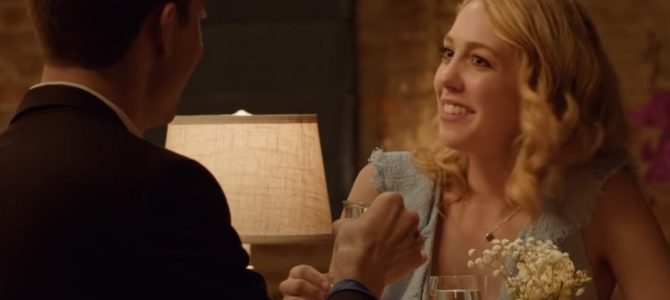“Dating Around” marks Netflix’s foray into reality television, but the show also represents a broader foray into something you could probably call Prestige Reality TV.
On the scripted side, Prestige TV defines critically acclaimed dramas like “Mad Men” and “Breaking Bad,” shows that have come to characterize today’s “Golden Age” of television. Meanwhile, reality programming has mostly been relegated to the networks and basic cable, with streaming platforms sticking to scripted shows and docuseries.
“Dating Around” feels like a docuseries but looks like “Master of None.” That’s to say, quite simply, the show is beautiful. Where most reality TV is purposefully crude and garish, “Dating Around” is artful, capturing New York City’s romantic side in dark restaurants and empty streets. It’s also clean of graphics, hosts, and commercial break teases, creating a sleeker product that feels slower and more authentic.
The show’s premise borrows heavily from existing templates: Each 30-minute episode follows a twenty or thirty something New Yorker (with one notable exception) on five first dates, then to after-dinner drinks with the matches who made it to the next round. Like any good MTV dating competition circa 2005, each of the six self-contained episodes also ends with a suspense-laden revelation of the winner.
The show’s premiere episode isn’t its strongest. Luke, the bachelor at hand, mostly proves how much the strength of “Dating Around” depends on a given episode’s subject. The women cast to court him are interesting, but his personality doesn’t click until at least the second half.
The next episode, featuring a young divorcé named Gurki, is the show’s most compelling, and for the same reason Luke’s is boring. Gurki’s affability and self-confidence naturally generates stimulating conversations with her suitors, leading to a post-dinner clash with one particular man that’s dramatic enough to satisfy fans of wilder reality shows (like myself).
In a more subtle twist, contestants wear the same outfits and go to the same places on each of their five dates, giving the impression that all variables are kept constant except for the person on the other side of the table. Quick cuts between different nights spin the dates into a blur, mirroring the defining millennial experience of perpetual swiping.
The pace varies, dipping into more substantive conversations when warranted and carving up others for laughs and tension to keep things moving. “Dating Around’s” approach to casting is also smart, maintaining a ratio of more normal participants than crazy ones—but still allowing the crazies to do their part in punching up the entertainment value.
The episode featuring Leonard, a much older widower looking for an age-appropriate companion, is a must-watch. It’s a testament to the advantages that come with the format “Dating Around” is pioneering. The show’s blend of typical reality mechanics with the docuseries style that streaming platforms have mastered allows for an eminently entertaining dating show experience.
It’s enough to make you wonder if something is being lost rather than gained in the strategic overproduction of shows like “The Bachelor.” More likely, the two are just meant to serve different audiences with different purposes.
But “Dating Around” does a great job at accomplishing the same basic goal of any romantic competition show, where so much of the fun is wrapped up in analyzing people’s compatibility from the safety of your couch. It just does it all with a little less subterfuge, and a lot more style. Assuming the approach catches on, “Dating Around” could spawn a new subgenre of Prestige Reality TV.









